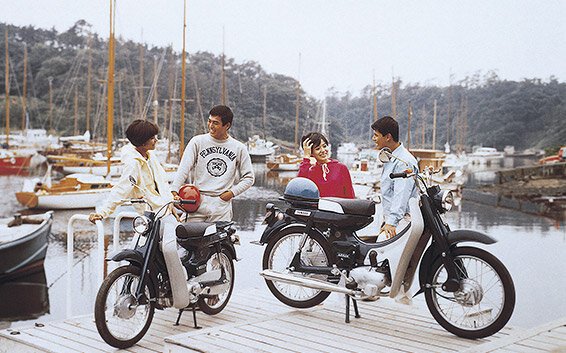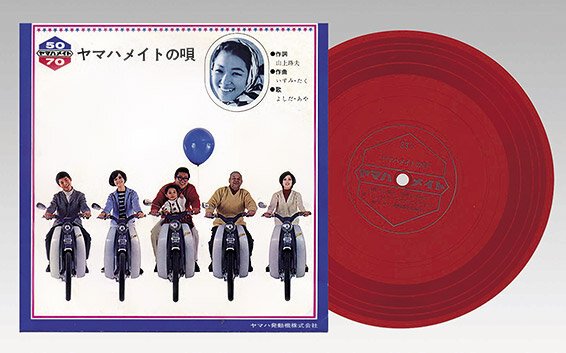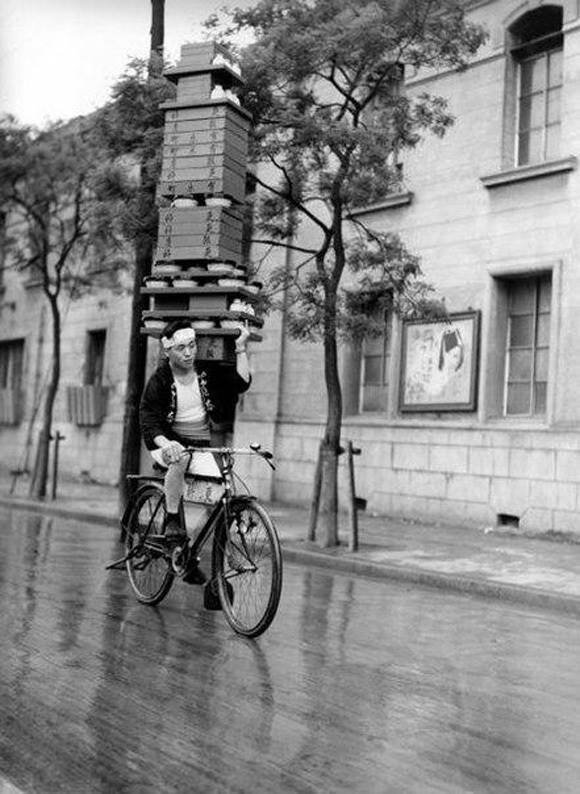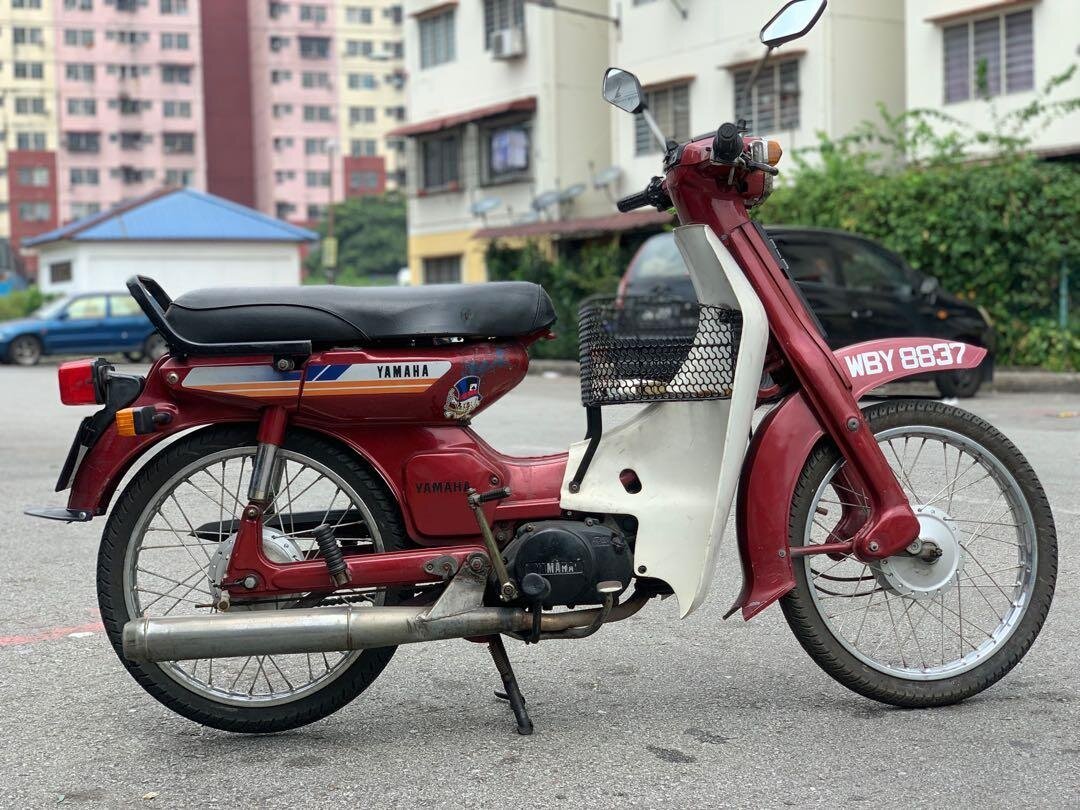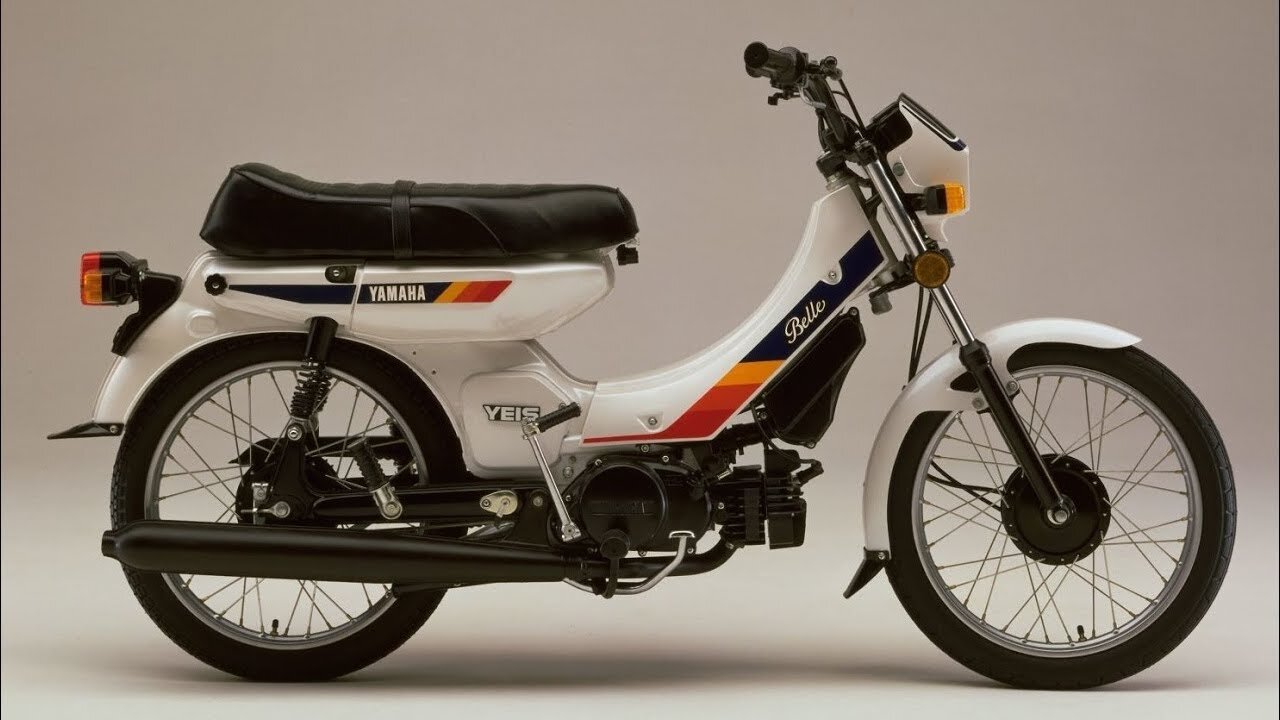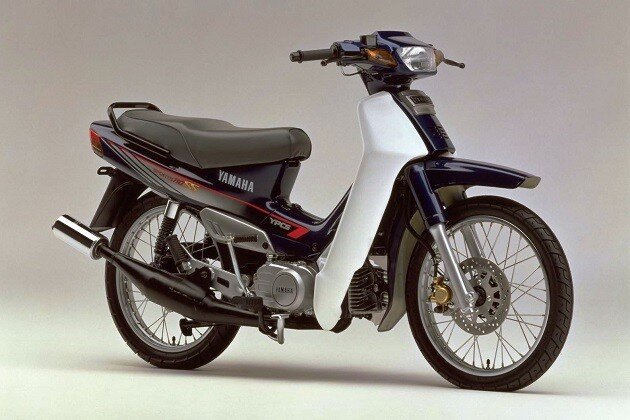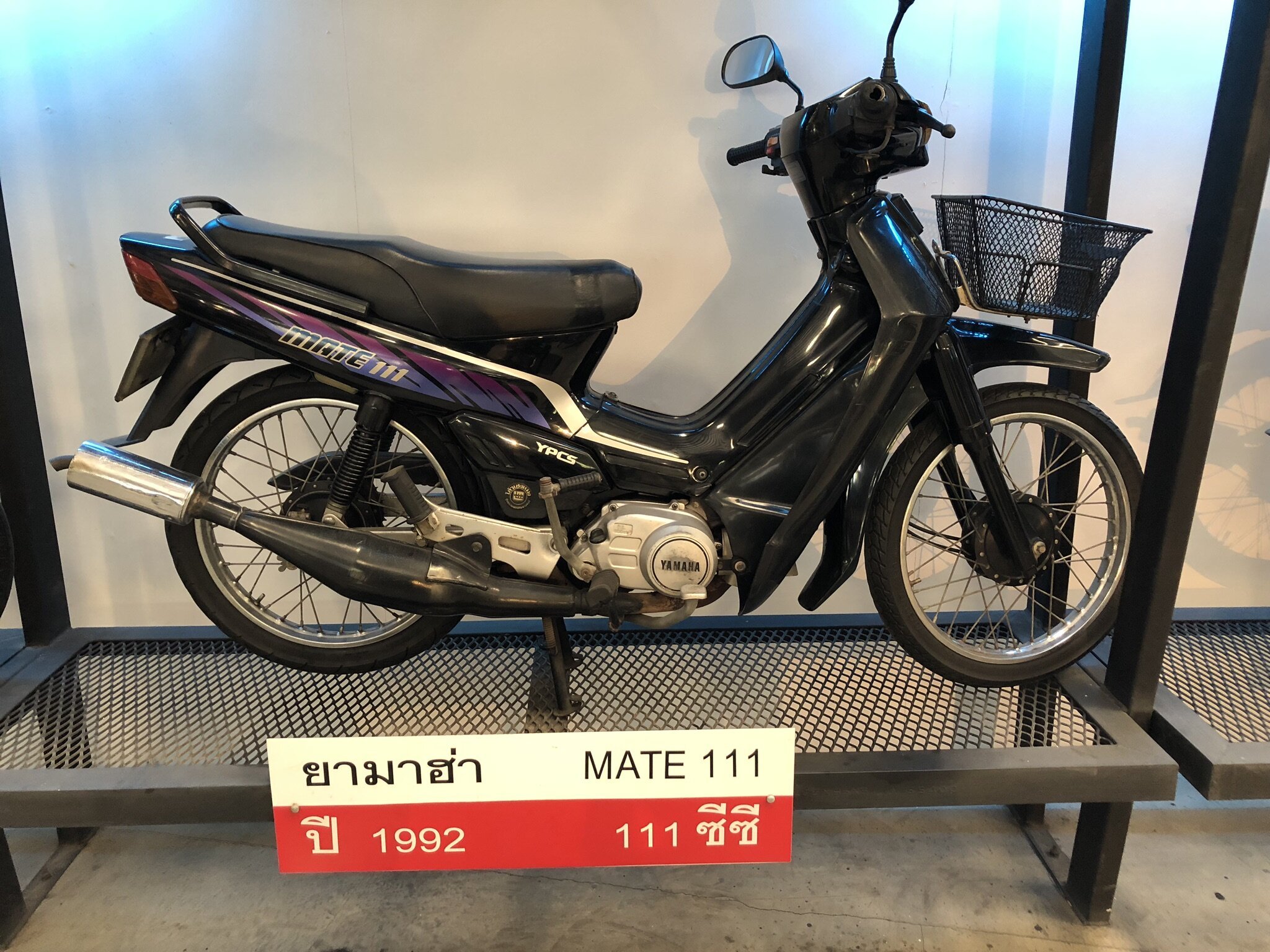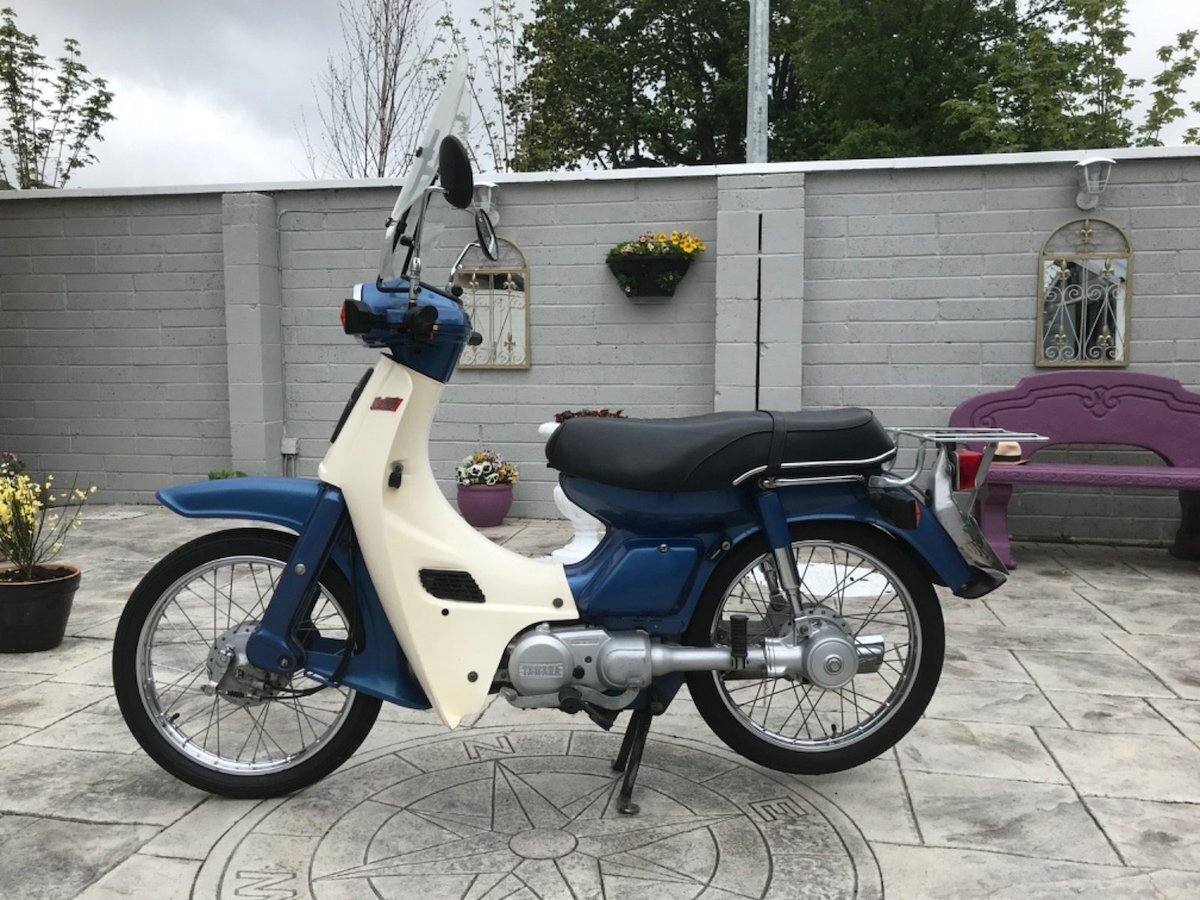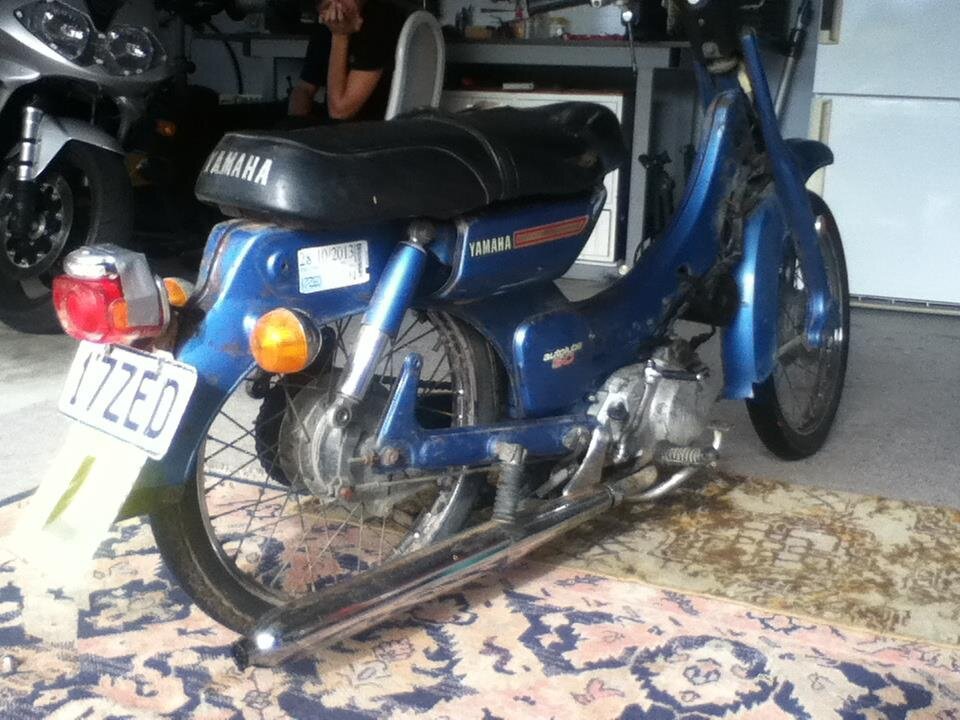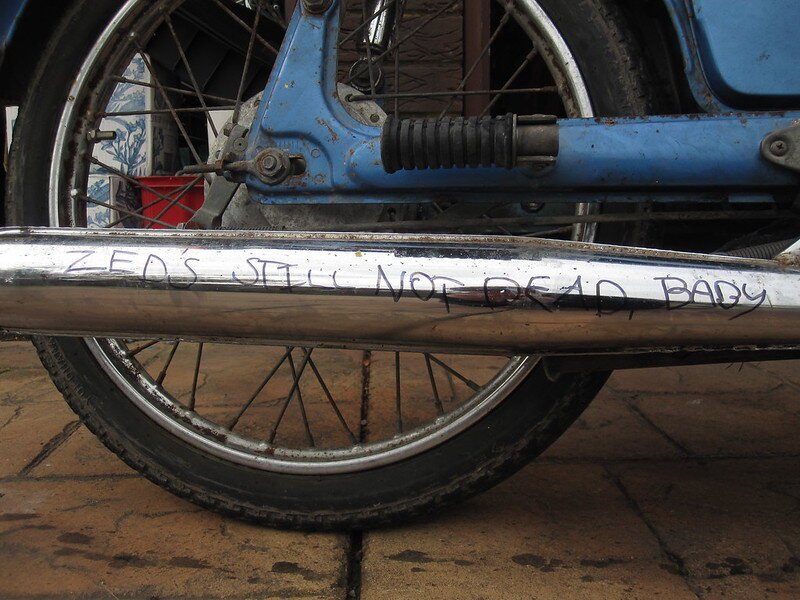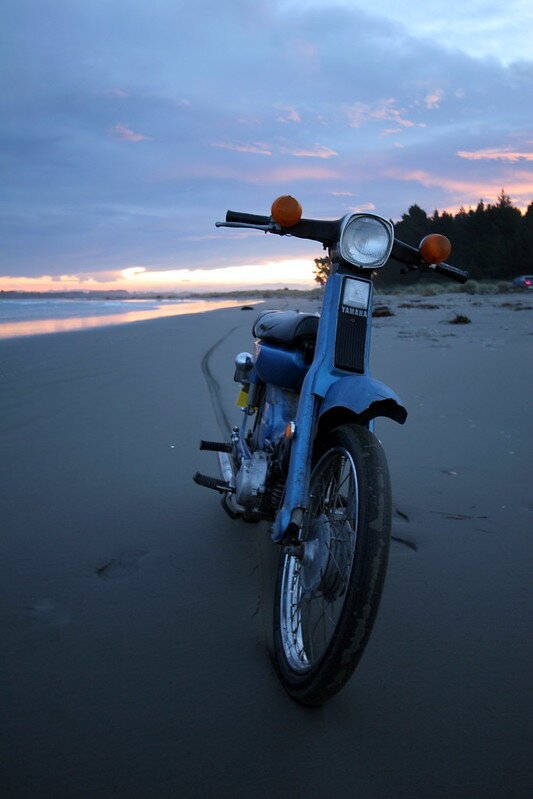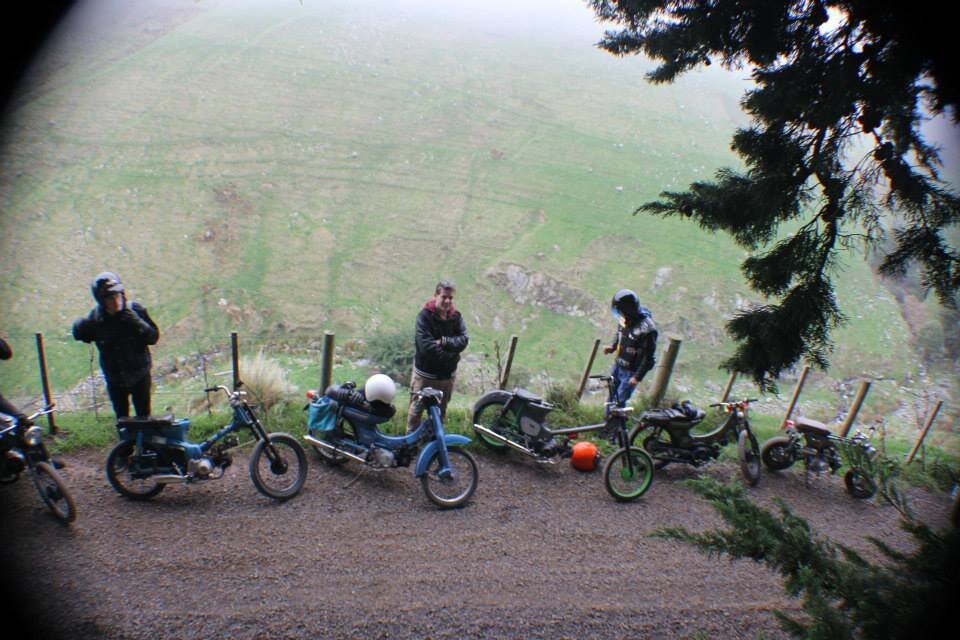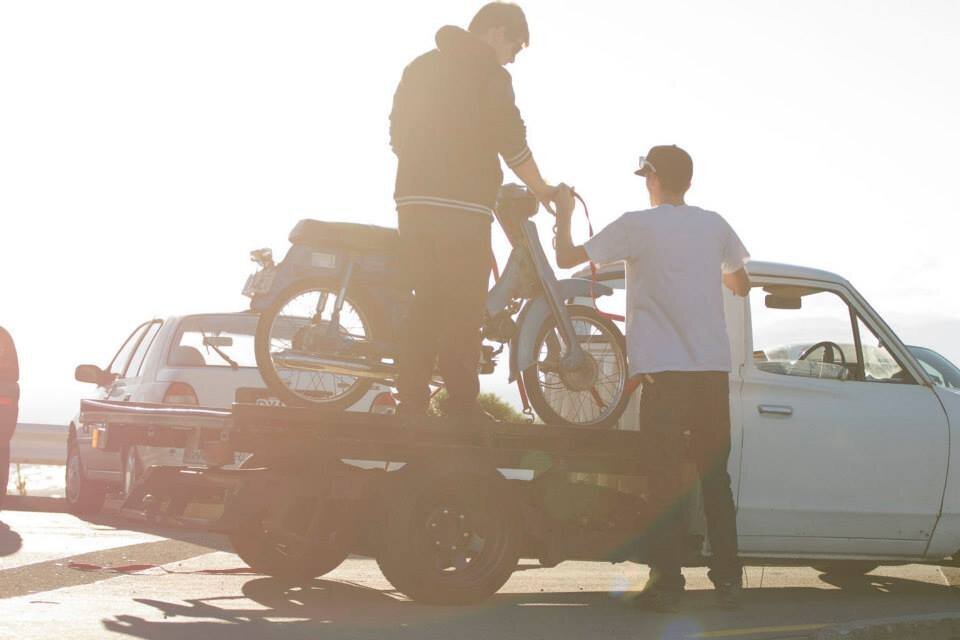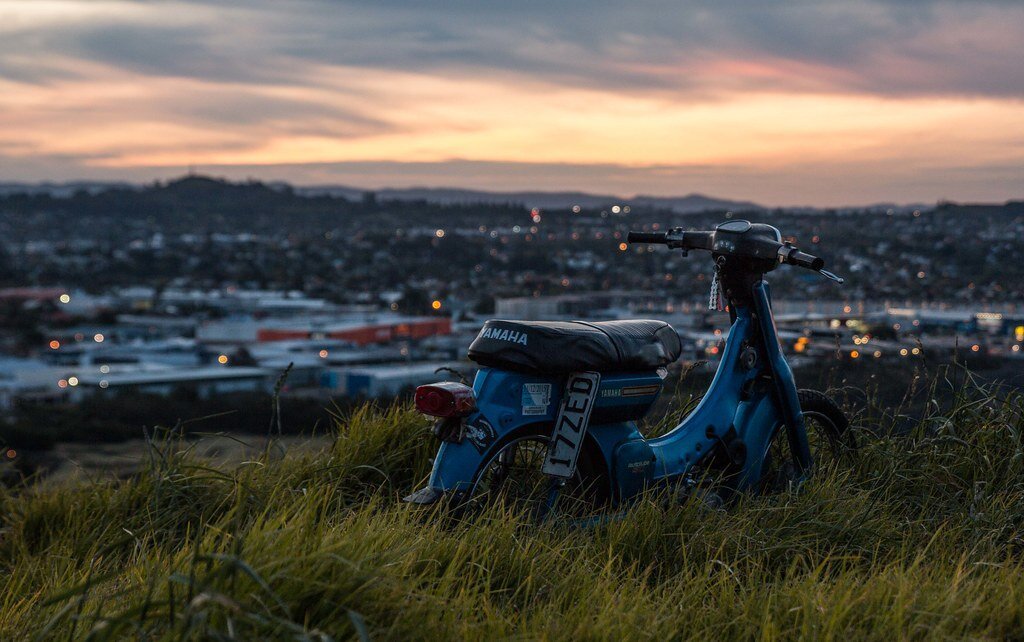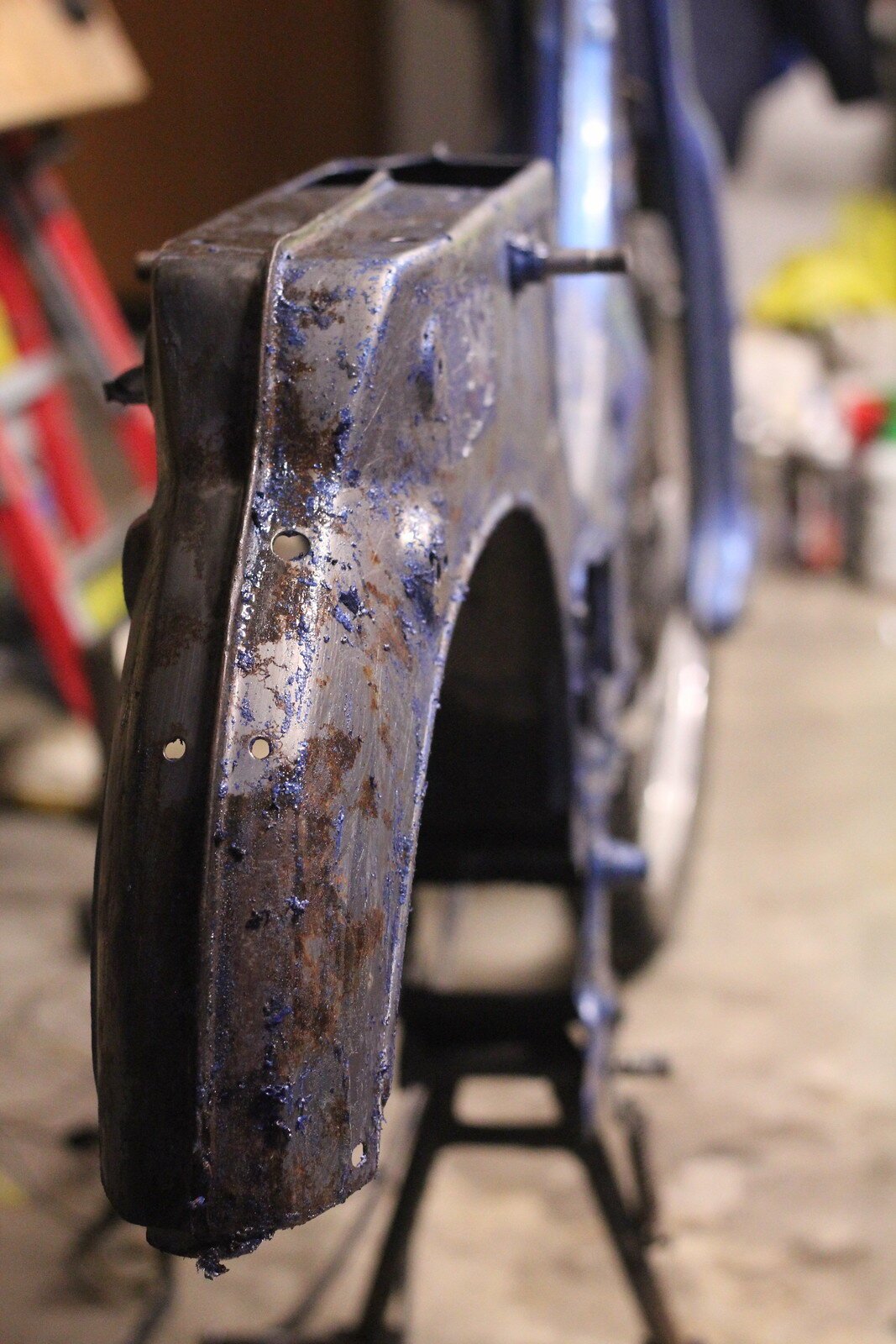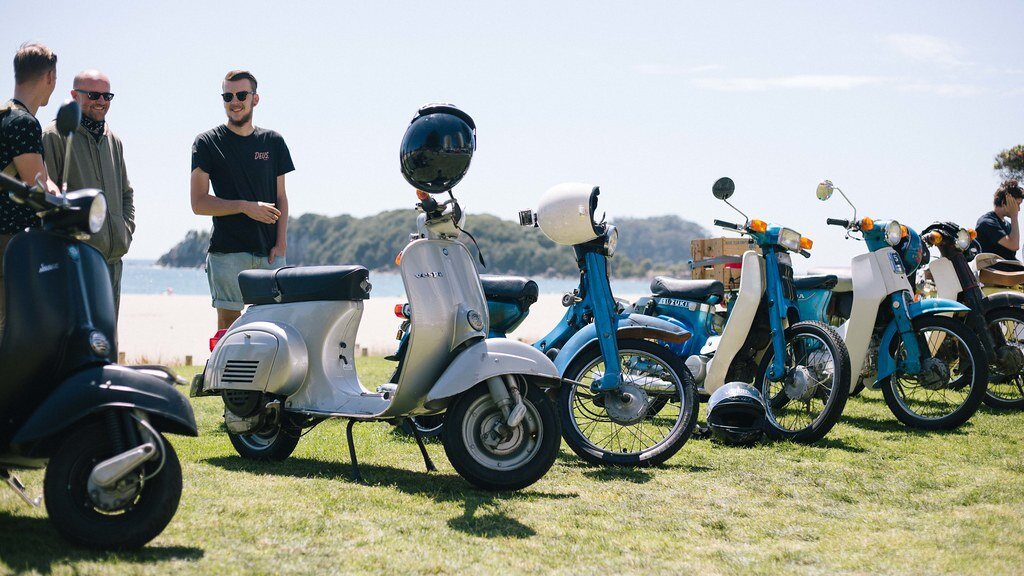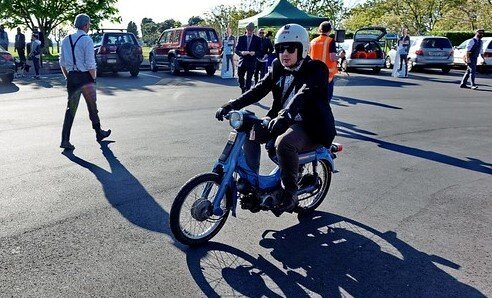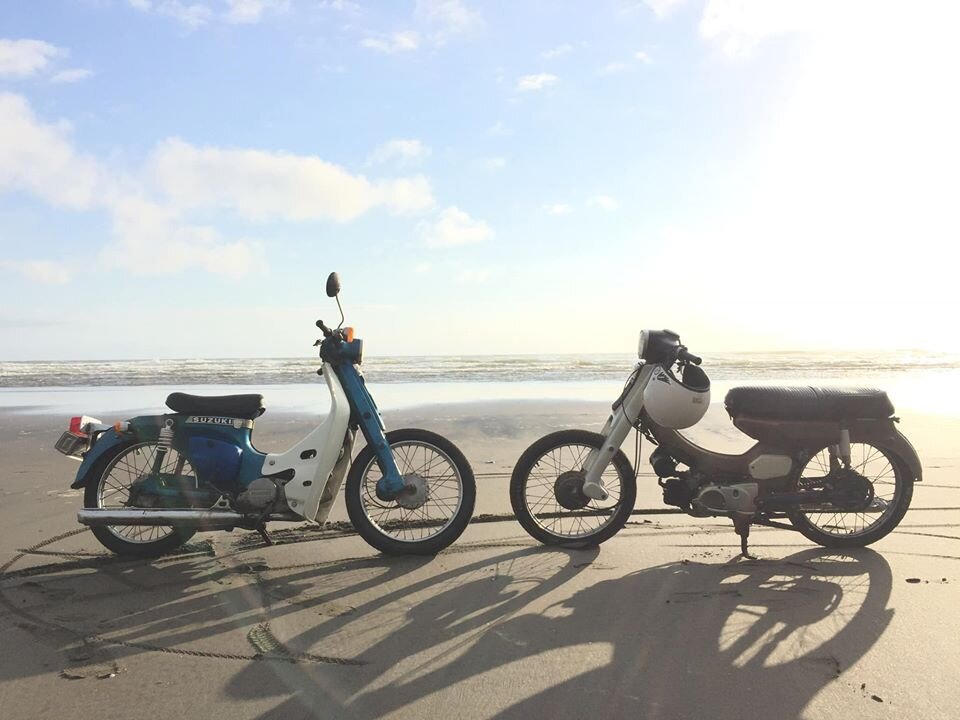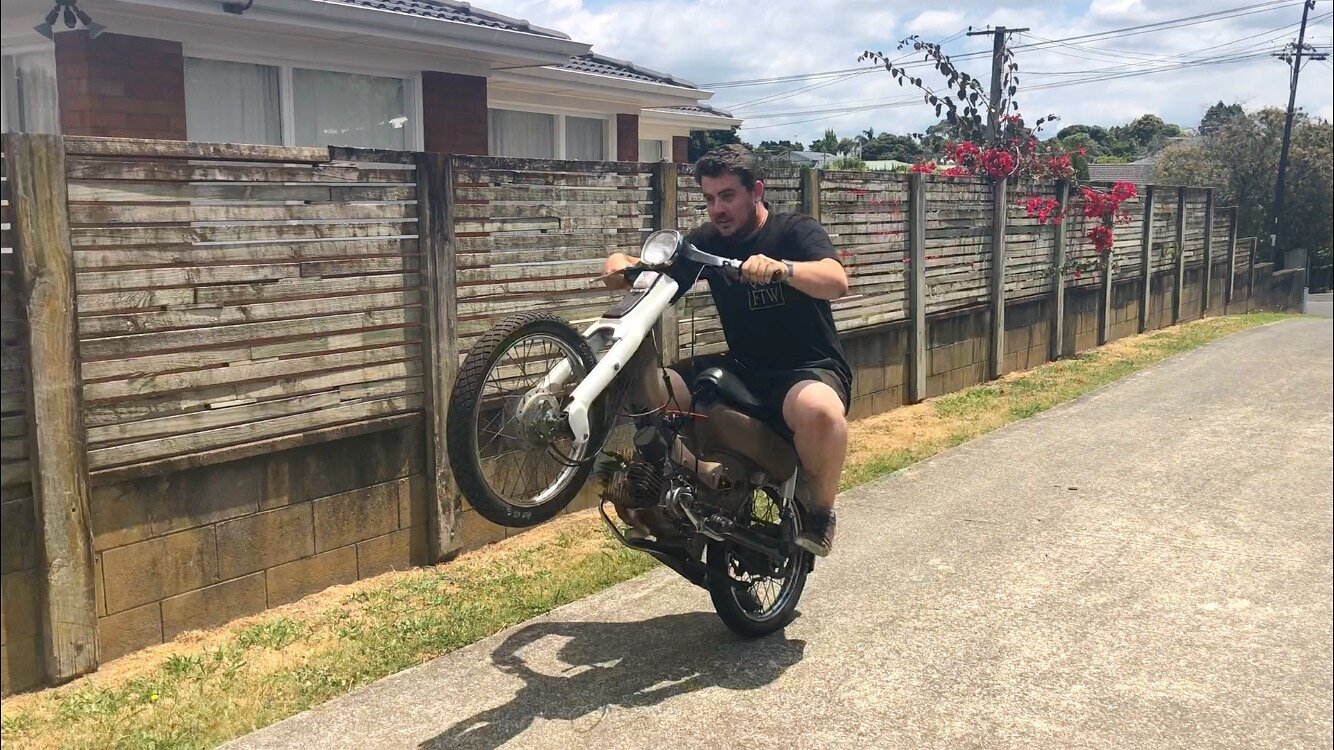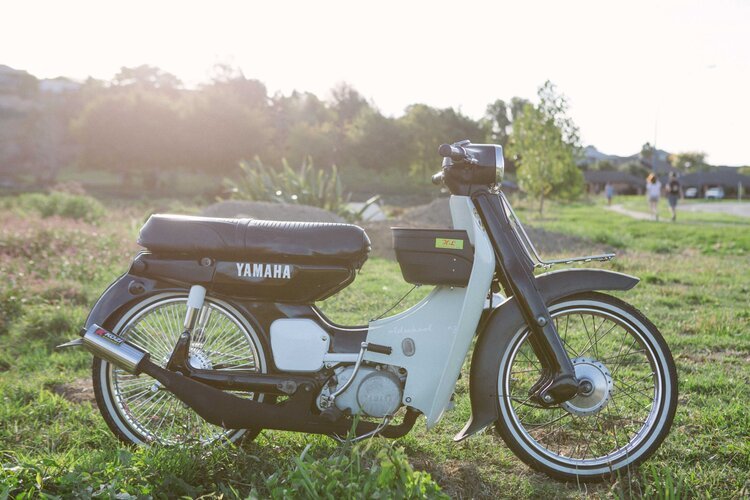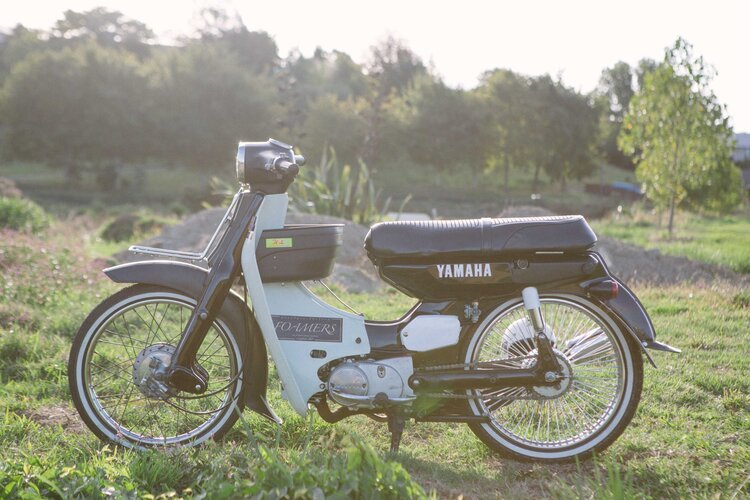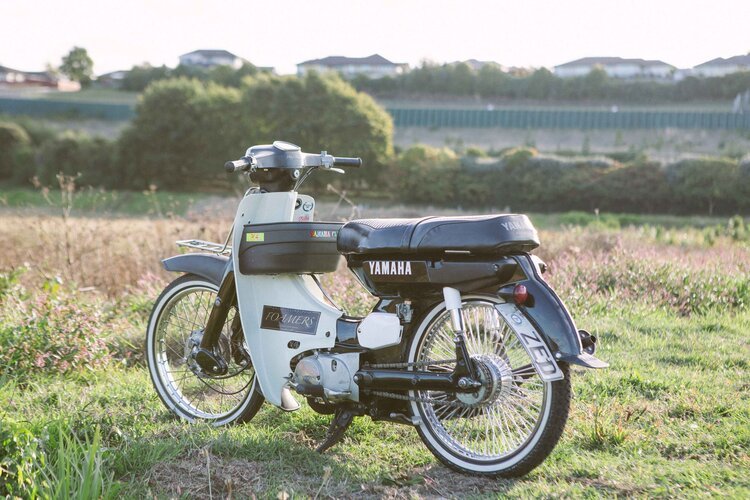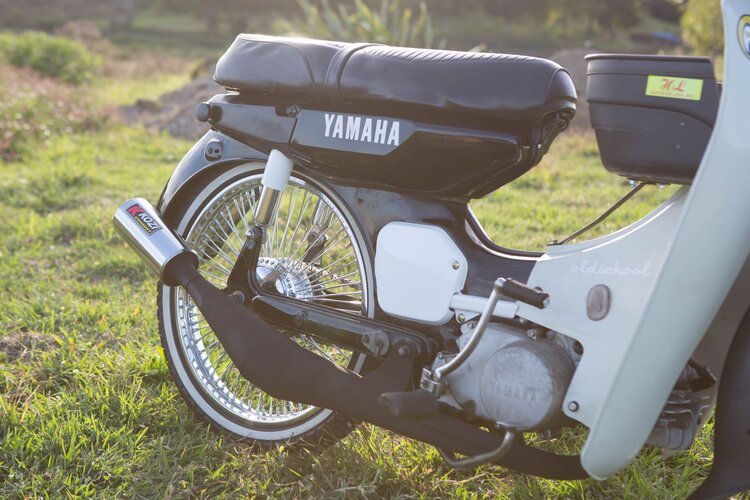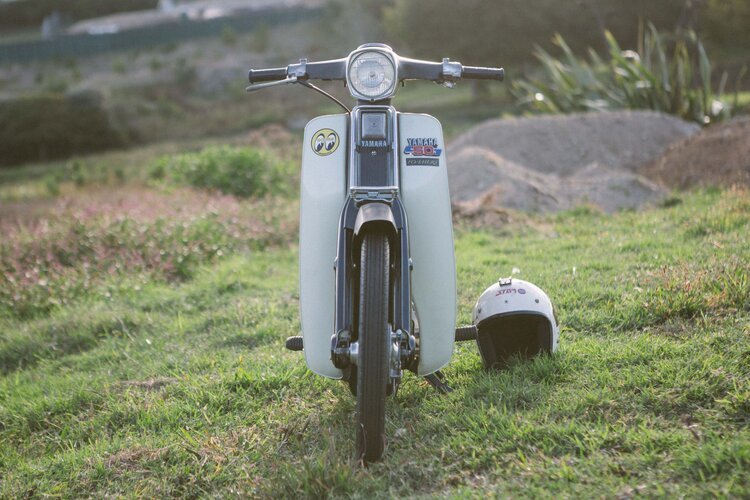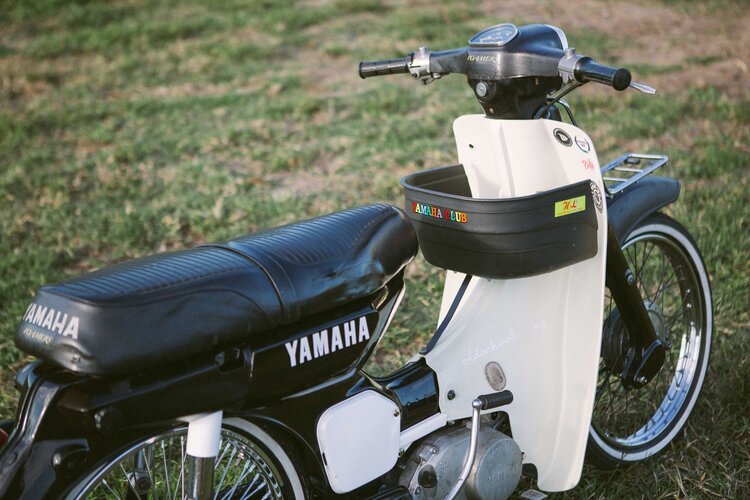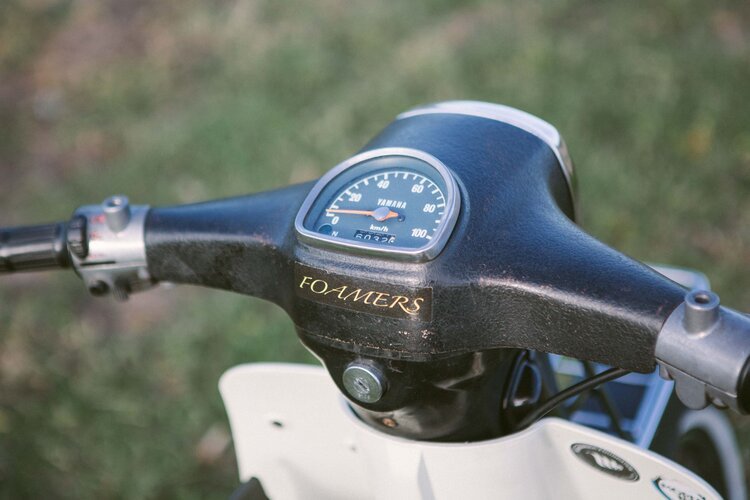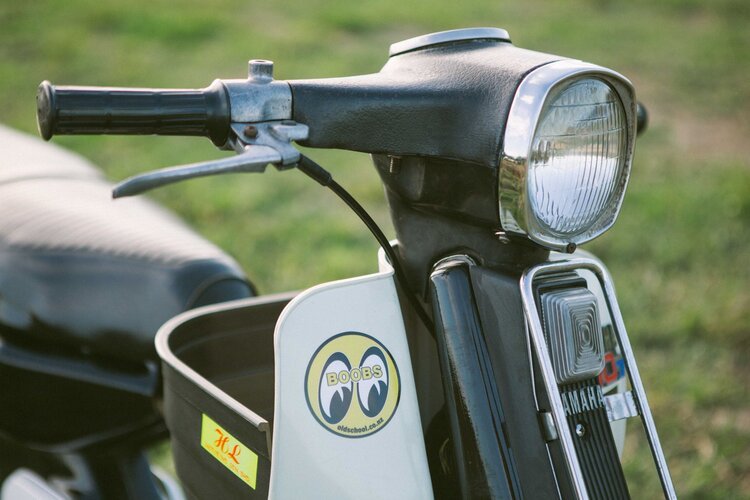ALL ABOUT THE YAMAHA V SERIES
Written by: C Blackmore.
What came first? The Honda or the Yamaha? In the world of Small Bikes, this otherwise unasked question is the topic of heated debate around the world both in person and online.
See, the world was a much different place 70 years ago. WWII was not long finished, and Japanese enterprise was in a race to develop their companies and innovations. This was happening at an impressive rate not seen before. When it comes to Small Bikes, many will know the story of Soichiro Honda and his Super Cub; developed by Soichiro as an answer to a self-formed question about noodle delivery, comfort and reliability. The Honda Super Cub story is as astonishing as the story of Honda itself. But lesser known known “step-thru” variants often miss out on their slice of the history books.
It’s no doubt that Suzuki and Yamaha both saw Honda’s rapid success as a reason to develop similar models. But what exactly were those models and how did they differ? Today we’re here to explore Yamaha’s V series in depth.
Enter the mid 60s. Honda had led the scene for the better part of 5 years. They were the only option in their category but their day of dominance was about to be challenged. Enter the Mate. Yeah, that’s right. The Mate. Yamaha first released the V series scooter in Asia as the Yamaha Mate series. Also it wasn’t initially the V series, either; it was the U series. Released in 1965, the U series was offered in the U5 (50cc) and U7 (73cc) variants. Yamaha used their recently developed (and by this time) well known Auto Lube system which removed the need for premixing. Auto Lube was developed in the early 60s by Yamaha Motor Corporation and quickly became standard on all of their small capacity bikes. The investment and development into this system ensured the Mate series were to be 2-Stroke powered machines.
While both had 3 speed, semi-automatic engines, Yamaha eventually released an automatic 2 speed option allowing for a true ‘twist and go’ experience on their already popular offering. Along came the 70s and finally Yamaha released the V series. These were made available in several markets including Asia, UK, Europe, Australia and New Zealand.
The Yamaha V Series was even used by Australia Post, more commonly known for their use of Honda CT110s.
The Yamaha V50, V70, V75, V80 and V90 were released in this series, all with the 3 speed 2 stroke base. It wasn’t a case of all countries getting all models either. Due to licensing laws places like New Zealand saw a lot of Yamaha V50’s but very few of the other variations.
While the 70s and 80s proved popular for Yamahas V series around the world, by the time the 90s rolled around there had been big changes in the lineup. Places like Australia and New Zealand no longer got the V series at all. Japan and the UK both had 4 stroke offerings now available under the Town Mate name, these models were mainly shaft driven and known to be reliable. But due to the lower frequency of units purchased in both countries compared to the Honda, there was never a large cult following like the Super Cub had retained since their release in 1959.
Thailand got the best of the bunch in the mid-90s with the release of the Yamaha Mate 111, featuring a 111cc 2 stroke, 4 speed semi-automatic. It came standard with an expansion chamber but had gone from the more familiar ‘step-thru’ shape to a more modern Underbone design. This bike was the pinnacle and sadly the end of Yamaha’s Mate series, completing over 30 years of development under the Yamaha ‘Mate’ name.
Everything has a history, and despite not being the most popular option in its class the Yamaha holds a special place in our heart. Probably because we’ve owned 2 Yamaha V50’s in the past but never managed to get one finished and in healthy shape. Which is why we’ve found Andrew Wilson from New Zealand, owner of a Yamaha V series for over 7 years.
Andrew’s V50 as it currently sits
2013 was the year Andrew and his V50 came to be together. Andrew isn’t like most people. This guy is a rare breed in the modern age. He’d prefer to do all the work himself and won’t stop till he figures it out. In the 7 years I’ve known Andrew it’s become a common occurrence to receive a message along the lines ‘this (insert vehicle here) is a piece of crap, I’m stuck, and I don’t know how to do it’. Only to have another message 2 hours later showing said crap vehicle working and running like new. Long story short, Andrews a sucker for mechanical punishment. His first car was a half dead BMC Austin 1300 which he still owns to this day. Which made it the least bit surprising when the Yamaha he purchased wasn’t running.
Upon acquisition of his 70s mechanical horse, Andrew set about making this thing run. The exhaust was coked up with carbon and 2 stroke blood. The fuel tap was leaking terribly and his tyres were almost as old as the bike itself. But it wasn’t long before the Yamaha was up and running, strong as the day she was born. We imagine he would’ve needed it too, it’s not often a 40 year old British car runs perfectly 365 days of the year.
For the next year this thing saw Andrew through daily commuting and general tomfoolery. He even met and had several rides with the infamous Quake City Rumblers of Christchurch. The first of which ended with his swingarm attempting to remove itself from the frame at speed. Eventually the V50 got stripped to its bare bones in aid of a refresh but it would be now that he learned a lesson those of us getting into bikes usually don’t find out before it’s too late: taking a bike apart is surprisingly easy, but reassembly is a different beast. Plans were laid out for brown frame paint, a black engine and white wheels. Fast forward 12 months and apart from being stripped of paint the bike was still in pieces plus Andrew didn’t even live on the same Island anymore. However, like clockwork his faithful Austin 1300 had reliably broken down again and this left him stranded in New Zealand’s biggest city without personal transport. Around 18 months after the initial disassembly, and with help from his father who completely reassembled the bike in short manner, the mighty V50 roared into life at the other end of the country. It was straight back into the daily commute life this Yamaha knew and loved.
For the next 2 years Andrew and his Yamaha V50 cruised around Auckland on the daily. From home to work, down to the local store, or even a casual 8 hour long beach ride. No matter what he threw at this bike it held up as flawless as the day it was created. I, like many younger people have been victim of the ‘2 Strokes are dirty and seize all the time’ mentality. During this next 2-year period Andrew and I had met through the internet. In late 2016 we even managed to have a proper ride together when him and a Suzuki FR50 owner made the trek from their city to mine for a small city loop ride I held. Watching his ownership and treatment of this humble grocery getter blew all my misconceptions out of the water. You could ride this thing on any surface, wide open throttle day after day and it would just keep going no matter what. But the only thing it wouldn’t do was exceed 60 KPH.
In the world of classic small 2 Strokes, aftermarket performance parts are either obscenely expensive or non-existent. For most people, owning a V50 was never a means of speed thrill. But after 5 years of ownership and regular riding it’s safe to say you learn the limits of your machine and to keep it exciting, much like real life, it can be a good idea to throw some extra love to your better half and see what happens. For a while now a rumour had persisted about the possibility of direct bolt in engine swaps. The main one touted for the Yamaha V50 was Yamaha’s PW80 – a kids dirt bike engine. Supposedly the engines fit straight in, they’ve got an extra 30cc which is a 60% capacity increase over stock and best of all they’re still in regular use so parts are plentiful. If he had his way then Andrew would have chased down a Thai produced 111cc Yamaha Mate engine, the extra gear and electric start make it an attractive prospect for the V series, but he’s also unsure as to whether it would directly fit. Not to mention the 10,000km’s of ocean and Islands between New Zealand and Thailand. 2 years after it’s arrival in the North Island, the brown paint scheme was eventually carried out. Andrew used a rattle can to achieve a brown flake type finish.
With its fresh new look, the poor thing was begging for a bit more power. Eventually a PW80 with front end crash damage came up for sale. It had been owned by a kid and thrashed around their home for the past few years before being crashed, it was local enough and cheap enough to take a gamble on. Before long he discovered the rumours were true. PW80 motors bolt straight in! After a few electrical mysteries to sort through Andrew could now hold a solid 80KPH cruising speed and the rate of acceleration was no longer hazardous to other road users. Mission success! Right?
Riding the now 80cc Yamaha was a massive improvement and made it the ultimate city cruiser. But the 80cc engine never really ran perfect. Sorting out the tune with a standard exhaust and stock airbox proved to be a tedious task, eventually settling on a rich but usable tune the bike saw a plethora of rides including an incredible home coming trip where Andrew trekked the bike to it’s original home to once again ride with Quake City Rumblers, over 5 years since they first met.
QCR reunion journey
The bike also ended up stripped again and repainted to a gloss black and white. This was a simple but clean look. The fresh paintwork accentuated the stock lines of the bike while subtle lowering of both the front and rear turned this ‘stock’ daily into a piece of art. While Andrew has managed to keep the same paint job for the last few years, he’s still added his touch to the V50. Probably the most noticeable change is the expansion chamber exhaust. Designed for the 100cc Malaysian edition of the Mate; this aftermarket item needed some slight fabrication to fit but immediately changed it’s humble ring-a-ting into a deep filthy tang that causes you to hear the bike long before you see it.
The 72 spoke rear wheel, combined with the stock front wheel and white wall tyres truly set off the whole stance of the bike. Andrew discovered his new wheels in the middle of a 2,500KM Small Bike ride through Malaysia and Thailand. Astounded by the wealth of parts on the shelves of local bike shops, he finally caved by way of purchasing the 72 spoke rims and white wall tyres. He didn’t even have room to take them on his bike but thankfully the shop sent them forward to his hotel. These wheels would prove to test him again when his luggage was lost on the flight home from South East Asia, with none other than the wheels and white walls inside. A few nervous days elapsed before they were reunited safe and sound. He’s used a 72 spoke rim on the rear and keep the stock 32 spoke front end. Speaking to Andrew, I found out the rims weren’t actually made for Yamahas, but they were a bolt on replacement for Honda Super Cubs. The rear was a direct fit while the front will require some machining work due to the brake set up being different on the Yamaha. The middle basket is a recent addition from Malaysia and hangover from his recent adventure. Almost every single Small Bike in that country had one of these middle baskets. They proved to be a blessing for locals who had a Small Bike as their only means of transport. Combined with a front basket and a storage top box, the Underbone bikes of Malaysia would have a respectable amount of storage. When one became available locally it was quickly snapped up and adapted to his Yamaha. Last but not least is the heart of the machine. Andrew did the unthinkable and sourced an original Yamaha V90 motor. With the second engine swap complete and an 80% increase in power from stock, the once humble Yamaha V50 is now a sleek, quick and enviable machine.
Learning about both the history of the Yamaha V Series and the history of Andrew’s V50 has taught us a lot. But if anything, we learned you don’t need to follow the crowd to get noticed. In a world where every man and his dog chase a Honda Cub of some sort, the V50’s and FR50’s of this world are often left behind. Regardless of their make, all Small Bikes deserve love.
Let this be proof that the Yamaha can hold its own; it just takes the right person to do it.
CHECK OUT THIS GALLERY OF ANDREW’S V - SERIES
Build notes:
1970 YAMAHA V50
Engine: 90cc, 2 Stroke, reed valve
Transmission: 3 Speed Semi automatic
Wheels: 17”, 2.50” Front tyre, 2.75” rear tyre
Fueling: Yamaha Autolube self-mixing system
Exhaust: Kozi Expansion Chamber
Builder: Andrew Wilson
Videos:


